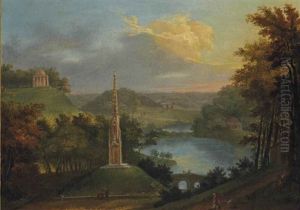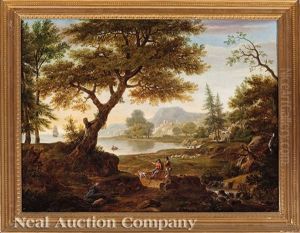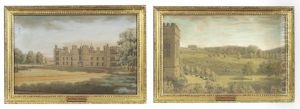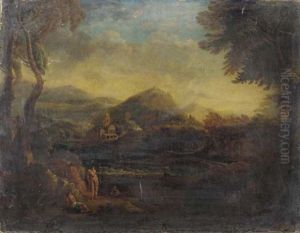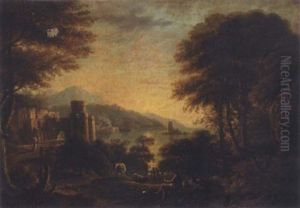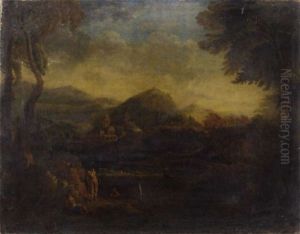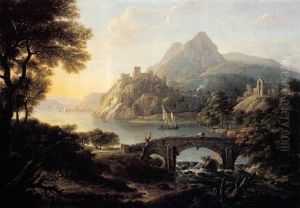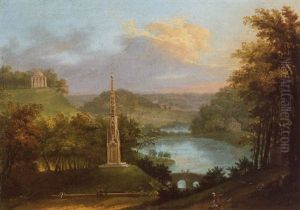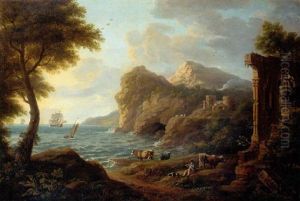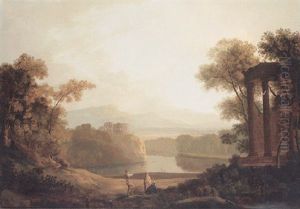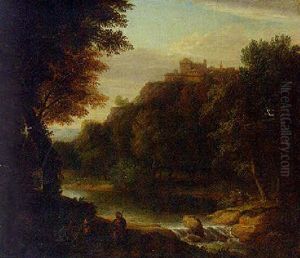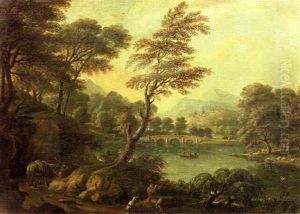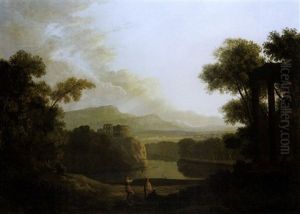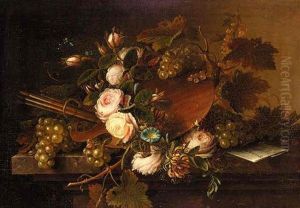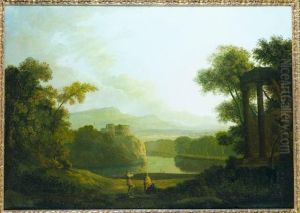Copleston Warre Bampfylde Paintings
Copleston Warre Bampfylde was an English gentleman, artist, and landscape designer, known for his contributions to the English picturesque movement. Born into the gentry, Bampfylde's early life was marked by the privileges and responsibilities typical of the landed aristocracy. He inherited Hestercombe House, in Somerset, which would become the canvas for his most enduring legacy. Unlike many of his contemporaries, Bampfylde's interest in the arts was not just that of a patron; he was a skilled artist in his own right, particularly noted for his watercolour landscapes which capture the sublime beauty of the English countryside with a delicate and precise hand.
Bampfylde's contributions to the arts extend beyond his personal creations to his work at Hestercombe Gardens. He transformed the landscape surrounding his family home into one of the most celebrated examples of the picturesque style in English garden design. This approach sought to mimic the idyllic and often wild beauty found in landscape paintings, emphasizing naturalistic elements and romantic vistas. Bampfylde's work at Hestercombe is considered a precursor to the later, more extensive developments in landscape gardening brought about by figures like Capability Brown and Humphry Repton, who are often more widely credited with the establishment of the English landscape garden style.
Throughout his life, Bampfylde was engaged with the intellectual and artistic currents of his time, becoming a notable figure in the cultural life of the West Country. His artistic endeavors were not limited to painting and gardening; he was also involved in the literary and social circles that included many of the leading figures of the day. Despite his contributions and his active engagement with the cultural movements of the 18th century, Bampfylde's work was, until recently, relatively overlooked in the annals of art history. Recent scholarship, however, has begun to reassess his role, recognizing him not just as a participant in the cultural life of his time, but as an innovator who helped to shape the aesthetic sensibilities of the picturesque movement in England.
Copleston Warre Bampfylde died in 1791, leaving behind a legacy that has grown in appreciation over the centuries. Today, his work, especially the gardens at Hestercombe, is celebrated for its artistic vision and its influence on the development of landscape design. His paintings, too, are recognized for their contribution to the development of watercolour as a serious medium in English art. Bampfylde's life and work exemplify the Enlightenment ideal of the gentleman artist who not only patronizes the arts but actively contributes to them, blending creativity with a deep appreciation for the natural world.
